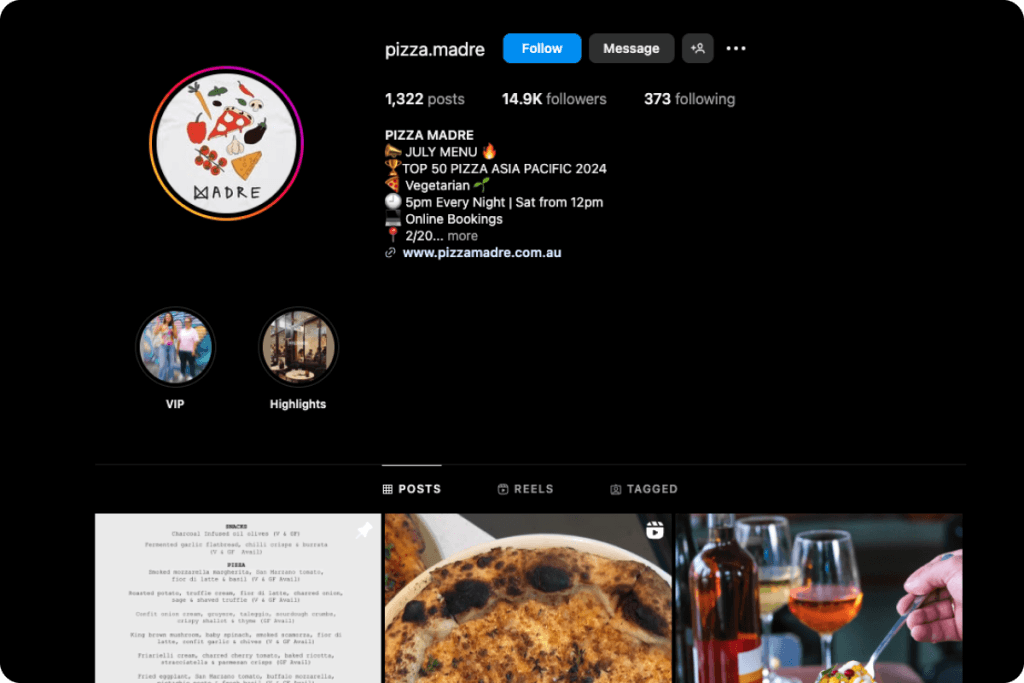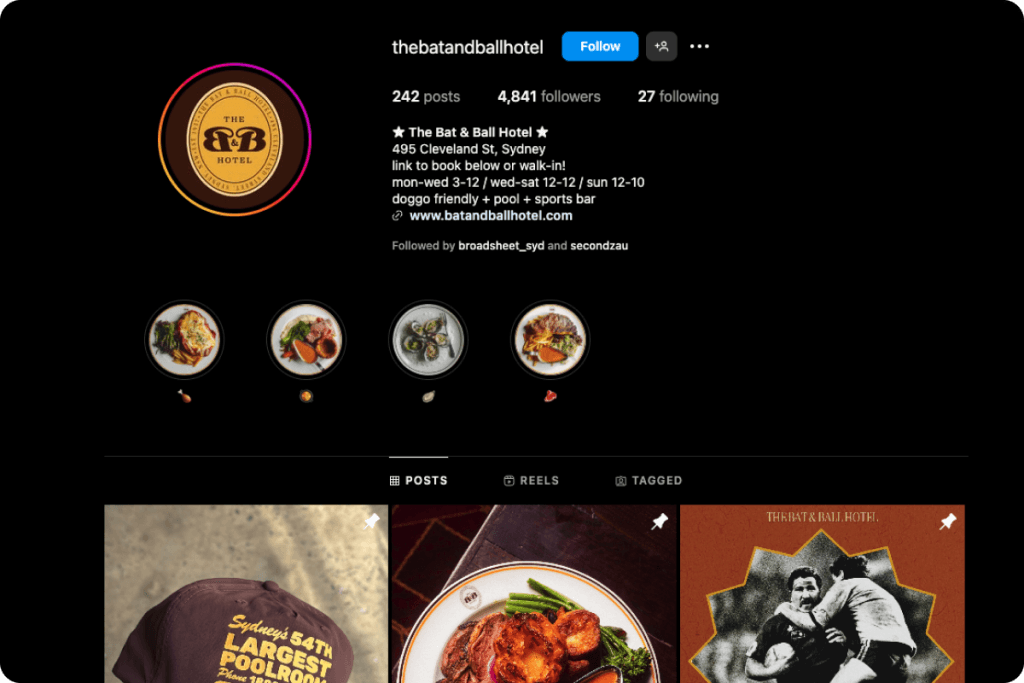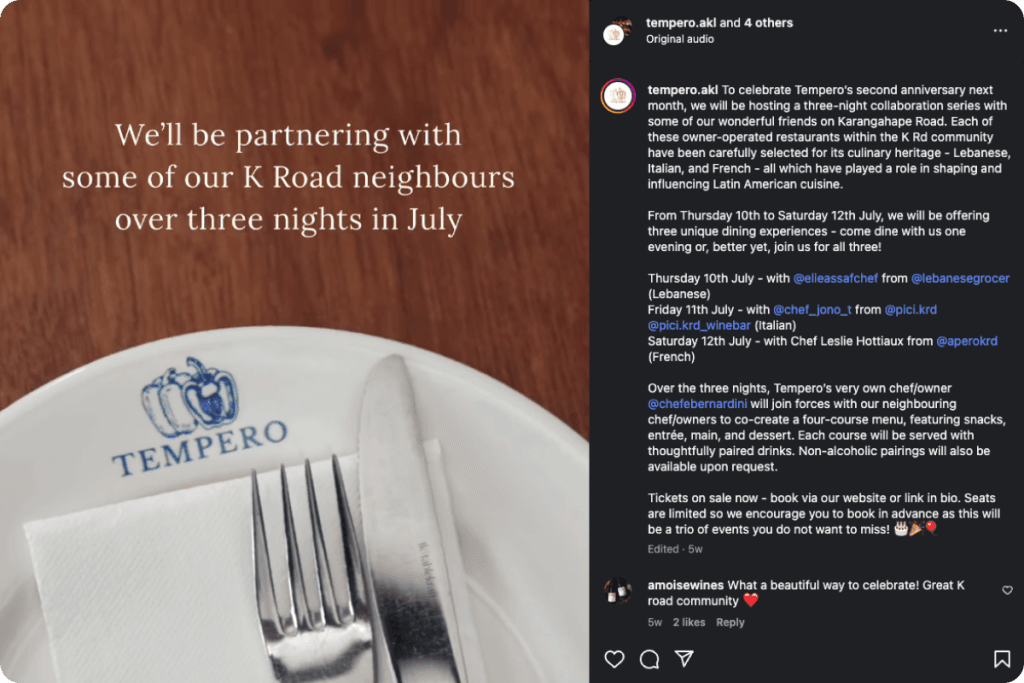A restaurant is one of the most difficult businesses to run. From increasing food and inventory costs to labour shortages, restaurateurs constantly face challenges that can easily put them out of business.
A proper restaurant marketing strategy can help boost the presence of your restaurant to increase foot traffic and direct orders. And one of the best ways to boost the visibility of your establishment is through an effective PR strategy for restaurants.
In this article, we’ll show you how to use PR for restaurant marketing in six ways. Let’s get started.
How to leverage PR for restaurants
Here are six ways to use public relations for restaurant marketing.
1. Strong brand story
What makes your restaurant special?
This is one of the most important questions you must answer when preparing your restaurant marketing strategy.
Is it a unique cultural heritage? Or perhaps it’s a special culinary expertise?
Whatever it is, you must identify what makes your restaurant different and use it to tell your brand story in all your marketing and PR assets.
Your story will need to be genuine and compelling to create an emotional connection with your potential customers. Remember that 9 out of 10 adults say they enjoy dining at a restaurant. This allows them to enjoy a special dining experience that is difficult to replicate at home. But how can you attract these customers to your restaurant without being vocal about what makes your establishment so special?
Check out the Instagram bio of this restaurant.

You can tell that this Sydney-based restaurant takes great pride in its vegetarian pizzas. The same USP is repeated on their website and other channels.
You will need a similar strategy for your own restaurant PR campaigns. Make sure your brand story is genuine so that it can resonate with your audience. Also, use an article rewriter to repurpose and maintain a consistent brand story across all your marketing assets and channels.
That brings us to the next point…
2. Media - local and social
The media plays a key role in any public relations campaign, including restaurant PR.
If you really want to boost the visibility and popularity of your restaurant with the locals and even neighboring towns, you will need to build a strong relationship with the local media.
Start by identifying the local food/restaurant journalists and bloggers. Next, reach out to them, offering exclusive stories. Exclusivity is the one thing most journalists love. An exclusive interview with your head chef or a behind-the-scenes tour can help you get valuable coverage to boost your restaurant’s visibility.
But, as the strategy director of the UK-based PR firm Prohibition PR explains, the trick with maintaining mutually beneficial relationships with journalists is to be of help at all times. Don’t reach out only when you need coverage. You can also offer your help when the journalists need an expert in your field for a story they’re working on, for example.
Don’t limit yourself to just the local media either. Social media is another great discovery channel you can use to reach potential customers from your locality and beyond.
So you’ll need a great social media marketing strategy for your business. You can partner with influencers to popularise your space and menu. You can also take advantage of user-generated content by resharing all the posts you’re tagged in by other customers.
Fill out your social media profile and provide all the essential information potential customers want to know about your business. For example, include a link to your restaurant website, operating hours, and address, as you can see below.

Your bio can also include your restaurant’s key differentiator or unique selling point as we saw earlier.
3. Community engagement
You want the locals to feel like the restaurant is part of their community. This will help you win their trust and business.
The best way to achieve that is by actively engaging the community. You can start by getting involved with local events or activities. Of course, you’d want to be involved in most of the activities related to food or restaurants since that is your industry.
Think about a local food festival, for example. Your presence at such a festival helps you reach your target market and showcase your offerings.
However, you don’t want to be the business that only shows up when it’s convenient for them. So, make sure to get involved even with other activities that seem irrelevant to your business. You can take part in charity events, volunteer work, and so on.
Besides being the right thing to do, these initiatives will win you goodwill with the locals, which is vital for your restaurant’s long-term success.
4. Event sponsorships
Event sponsorship is a great PR tactic, but it does require a relatively substantial investment.
The idea is fairly simple. You identify special events popular among your target audience and then sign up to become one of the event’s sponsors.
So, in the case of doing PR for restaurants, you will need to identify and sponsor a popular local event. This can be a run, special dinner, a beauty pageant, or other similar restaurant events. You can even go as far as sponsoring a local sports team.
In addition to sponsoring existing events, you can create your own events. Think about a wine tasting event or a special brunch, for example. You can also host a live band on specific days of the week.

Anniversary or special occasions are a great time to host your restaurant events.
Though it can be costly, event sponsorship is a very strategic business move. It’s a great way to build brand awareness and also supports your local community engagement initiatives. Start with small events if you don’t have a substantial budget and work your way up as your restaurant and budget grow.
5. Partnering with other businesses
Partnering with other local businesses is a great way to reach new potential customers. Ideally, you would want to partner with complementary businesses. So, as a restaurant owner, you may look into local farmers, bakeries, wineries, and breweries as potential partners if they do not compete with any of your offerings.
The beauty of these partnerships is that you can also leverage them in your marketing assets. For example, you can say that certain meals (or even your entire menu if possible) are made possible by the relentless efforts of the local farmers. This can give locals a sense of pride. It also helps them build an emotional connection with your restaurant.
You can also partner with businesses in other industries. For example, co-working spaces have become really popular with the growth of remote work. You can partner with a local co-working business to give their members special discounts.
You can also partner with local fitness centers and independent entrepreneurs, like artists. Give the artists some space to exhibit their art in your establishment. You can even create specific events or set aside certain days for art exhibitions.
For example, the wine tasting event we mentioned earlier and the art exhibition can be held together.
6. Active reputation management
Finally, you must invest in active reputation management to maintain a positive brand image for your restaurant.
Reputation is very important for every business. One negative review can result in a full-blown PR crisis if you fail to handle it correctly. Similarly, glowing customer reviews can go to waste if you do not use them to elevate your restaurant’s reputation.
So, what exactly should you do?
First, you’ll need to monitor your brand mentions online. Go through Yelp, Google reviews, and other similar platforms to see what customers have to say about your restaurant. You can also invest in tools like Brand24, which can show you how people talk about your brand online.
Next, you’ll need a plan for how to respond to negative reviews or customer complaints. For starters, never ignore these issues. Secondly, assess the situation carefully to understand what went wrong. Then, offer a public apology to the customer and invite them to make it right.
Try to respond to the negative review within 24 hours. You can then take the conversation private once you’ve issued a public apology. And if the issue highlights a major flaw in your business operations (or if it has already gained so much publicity), publish a follow-up communication to show what your restaurant has done to permanently fix the issue.
And what about positive reviews? What should you do with them?
Positive customer reviews give you solid social proof you can use to promote your restaurant. Embed a carousel with these reviews on your restaurant website. You can also include these positive experiences in your restaurant newsletter, social media content, and other marketing assets.
Basically, let your customers’ own words do the marketing for you. After all, 72% of consumers trust reviews from other customers than they do brand content. For a more detailed walkthrough on handling reviews effectively, check out this guide to managing restaurant reviews.
Using PR for restaurant marketing is not very complex
We’ve shared six practical ways you can do it and real-life examples of restaurant brands that are already doing it.
Start by crafting a strong brand story that feels genuine and resonates with your target market. Then, take advantage of the local media as well as social media to boost your restaurant’s visibility.
The other strategies you can use are getting involved with community activities, sponsoring local events, and partnering with other local businesses. Finally, maintain an active reputation management strategy to remain on top of your restaurant’s public image.
Follow this restaurant PR strategy and you’ll see your restaurant’s foot traffic and direct orders increase significantly.


